Creating the Original Enterprise’s Shuttlebay
Matt Jefferies had anticipated the need for a flight- or hangar deck when he designed the Enterprise, and provided space in the aft section of the engineering hull for just such a purpose. But when the episode “The Galileo Seven” was supposed to unveil it, there was no way budget would allow for a full-scale set to be constructed.
Jefferies recalled in an interview Star Trek: The Magazine published in April 2000 that the “curved clamshell doors at the back” of the ship “didn’t look too much different from a lot of today’s modern hangars on the inside.” He took care to scale the bay’s design to the shuttlecraft that were supposed to fit in it. “The shuttlebay itself was only in miniature.”
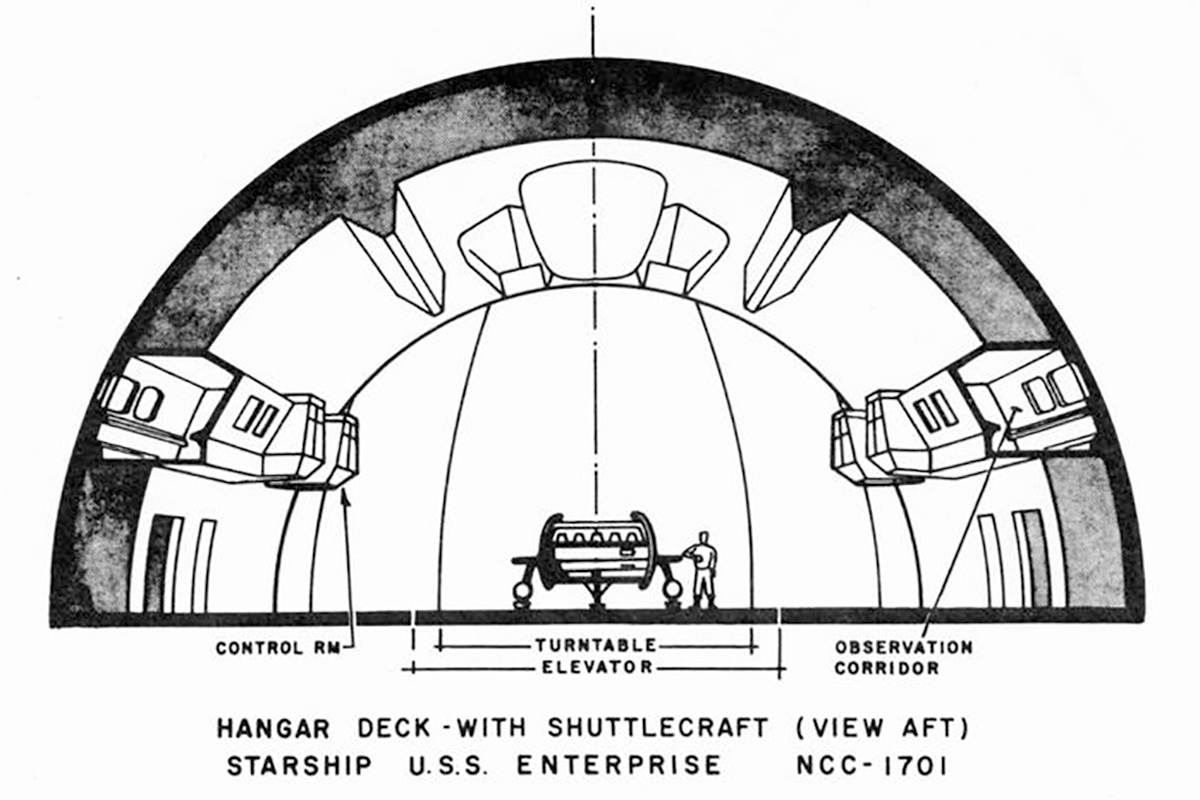
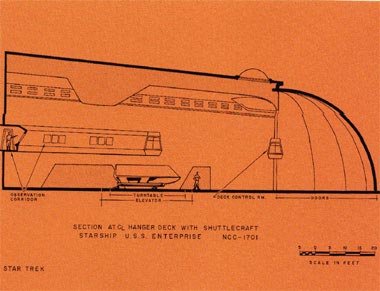
Maquette
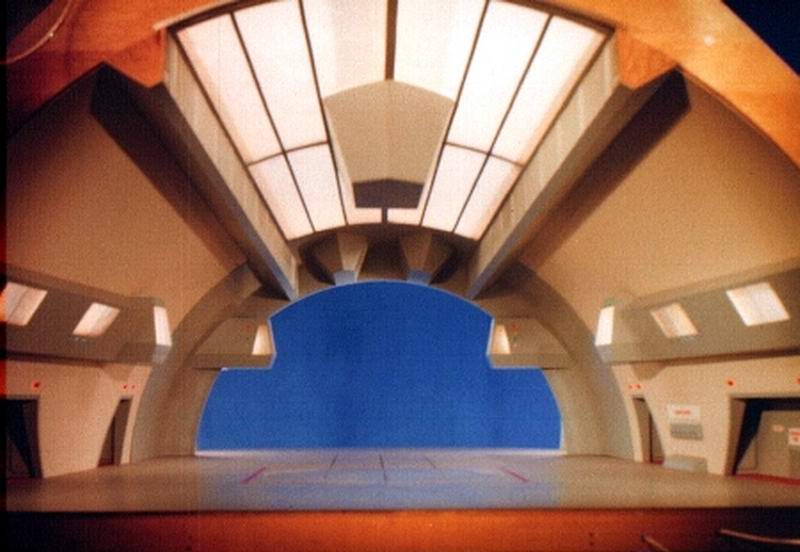
Richard C. Datin built the maquette. Star Trek: Communicator quoted him in 2001 explaining how the starboard side of the miniature was supposed to be removable, so the scene could be filmed from more than one side:
However, for whatever reason, the starboard wall was not made to be removable and filming of the miniature could only be done looking back to the clamshell bay doors.
Hence the familiar scene from “The Galileo Seven”.
The clamshell doors were hand-operated, as were cables that controlled the revolving platform in the center of the set. Footage shot at Dunn’s Film Effects was replicated throughout the rest of the series whenever a scene called for it. The maquette was probably destroyed.
CGI facelift
When the episodes of the The Original Series were digitally remastered in 2006, the shuttlebay scenes were replaced with CGI imagery.
Max Gabl did the matte painting, which premiered in the remastered version of “Journey to Babel”. Much more detail can be seen and the access corridors to the sides of the landing bay are extended.
In the remastered version of “The Galileo Seven”, a second shuttlecraft was inserted to make the scene visually more interesting.
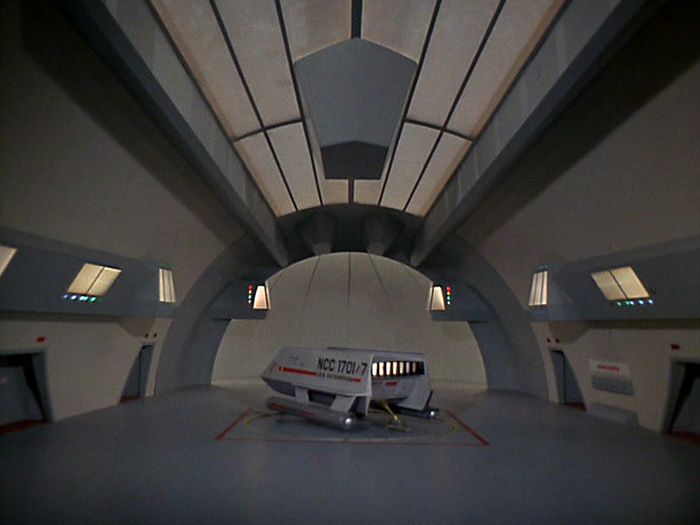

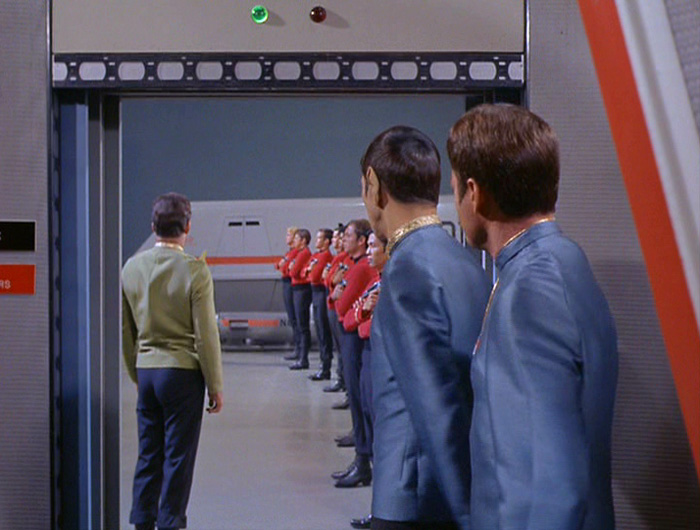

Apocrypha
In his Star Trek Star Fleet Technical Manual (1975), Franz Joseph provides a cutaway of the hangar deck. It closely follows Jefferies’ concept art but fills in some additional detail, including a tractor beam and landing tractor beam room.
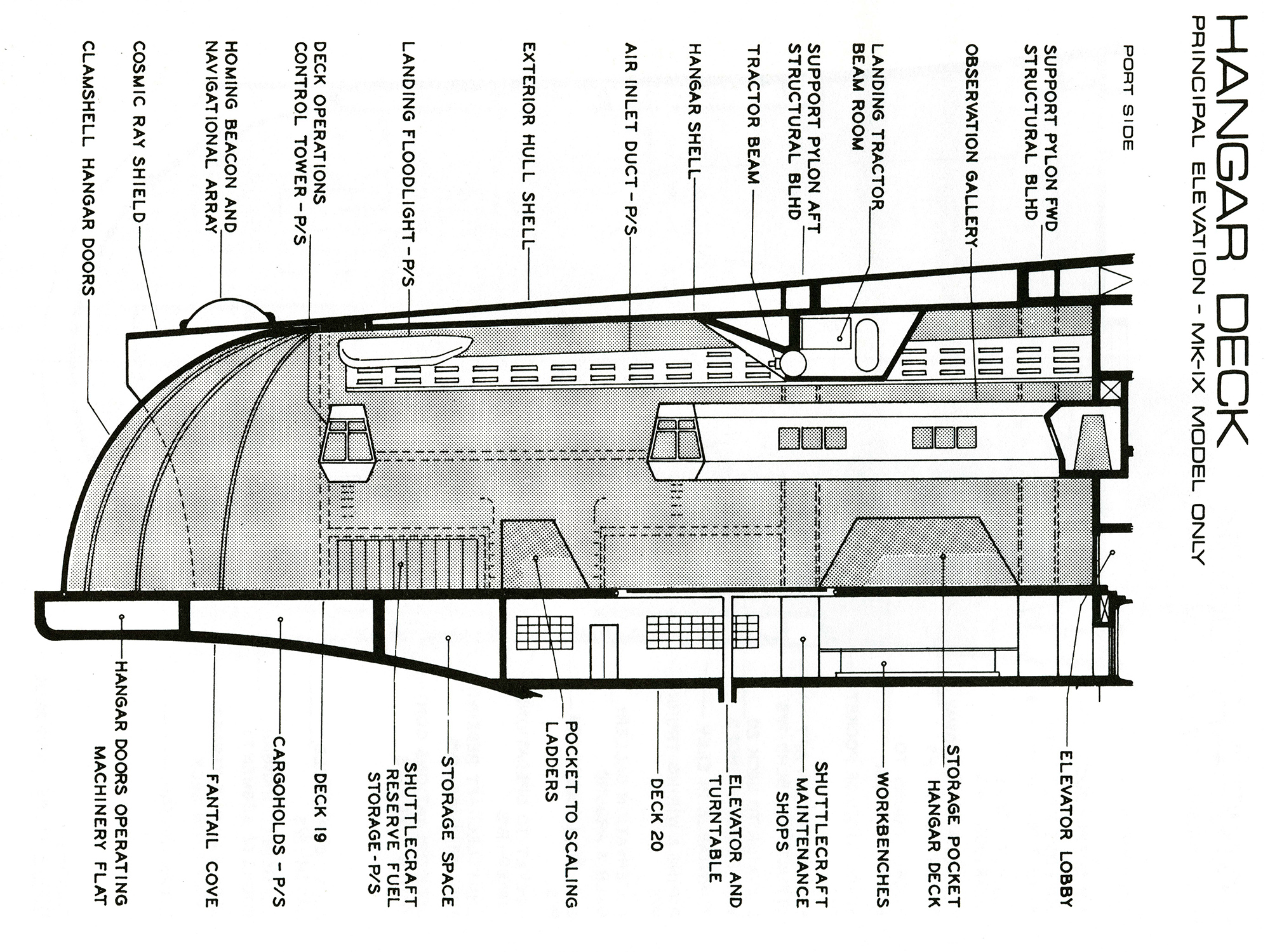
Joseph identifies the little bump on the back of the ship as a homing beacon and navigational array.
Geoffrey Mandel, in the U.S.S. Enterprise Officer’s Manual (1980), makes it a one-person observation dome.
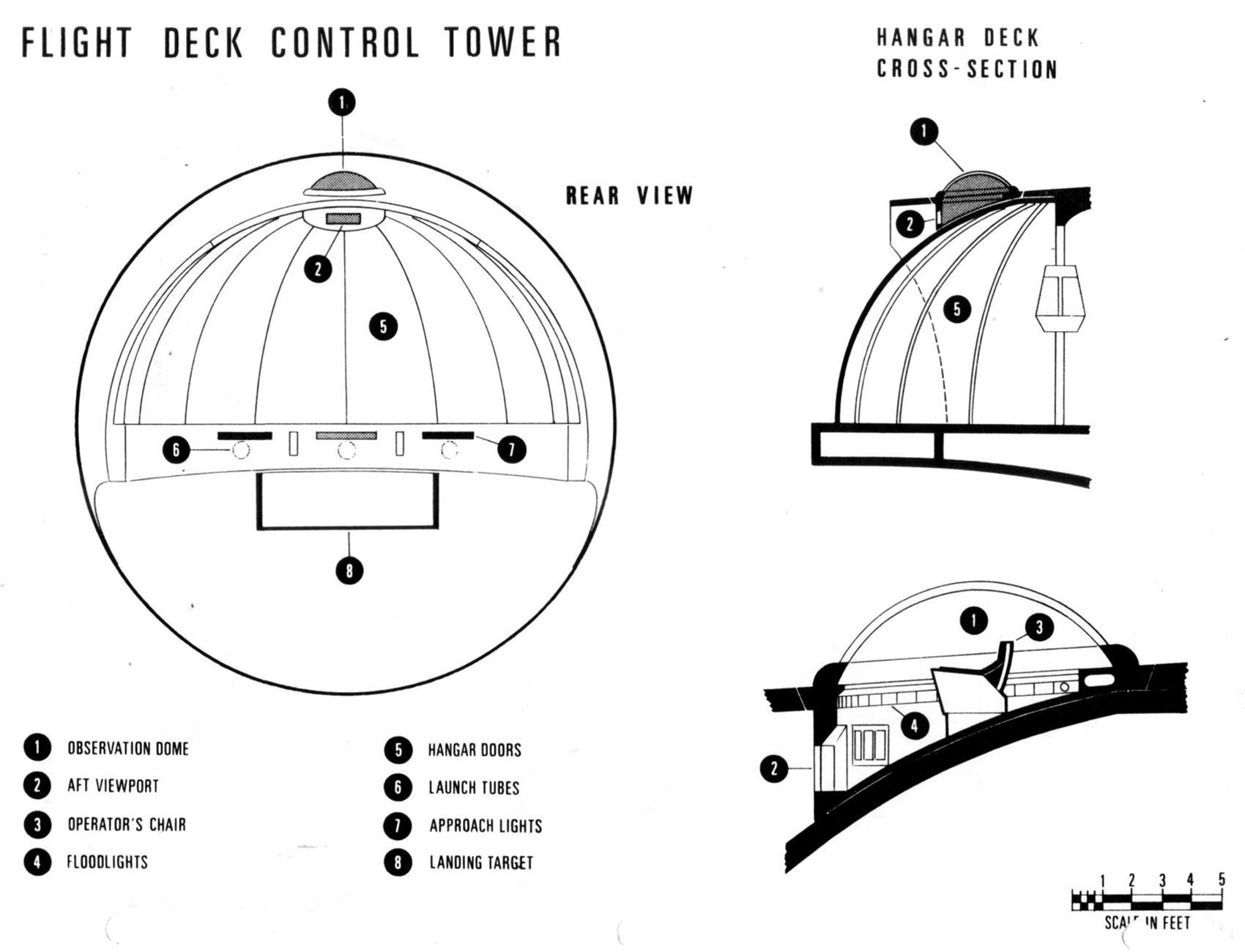

6 comments
Submit comments by email.